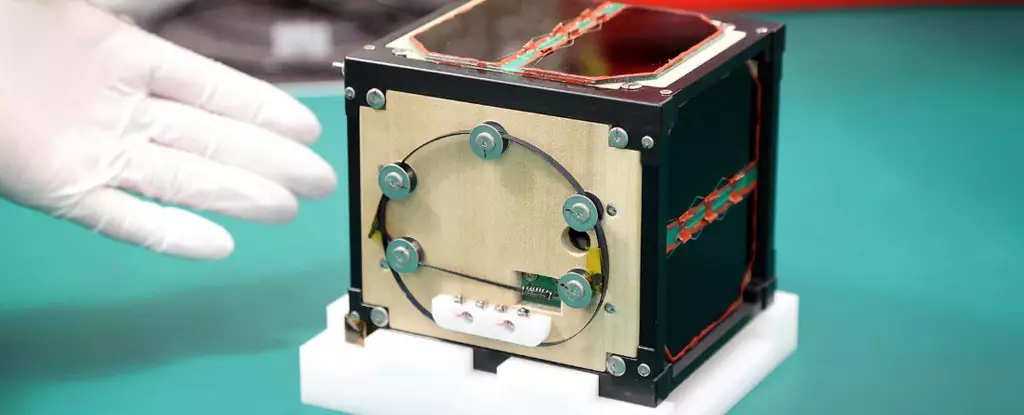In a groundbreaking leap for both environmental sustainability and space exploration, the world’s inaugural wooden satellite has successfully launched aboard a SpaceX rocket. Developed by scientists at Kyoto University, this novel satellite, known as LignoSat, is part of a vital resupply mission to the International Space Station (ISS). This pioneering project is not merely a technological experiment; it encapsulates a broader vision for reducing space debris and addressing the detrimental effects that conventional satellites have on our environment.
At the core of LignoSat’s design is an urgent need to mitigate the accumulation of space debris, specifically metal particles generated when satellites re-enter the Earth’s atmosphere. As these defunct satellites plunge back to Earth, they often disintegrate, releasing harmful metallic shards that can jeopardize both our planet and the delicate infrastructure of telecommunications. By utilizing renewable wood materials, the creators anticipate that LignoSat will disintegrate harmlessly, leaving no residual fragments to contribute to the already heavy burden of orbital litter. This ethos of sustainability and innovation has the potential to reshape the future of satellite technology.
The dimensions of LignoSat are remarkably compact, measuring just 10 centimeters on each side. This small, cube-like structure was launched from NASA’s Kennedy Space Center in Florida, housed in a specialized container designed by the Japan Aerospace Exploration Agency (JAXA). Initial reports confirm that the satellite “flew into space safely”, marking a significant milestone in experimental aerospace engineering. Following the successful launch, preparations are in place for LignoSat to dock with the ISS before being ejected into space approximately one month later. During this period, researchers will monitor its performance and resilience against extreme temperature variations and physical strains experienced in outer space.
The successful deployment of a wooden satellite could usher in a new era for satellite manufacturing. Takao Doi, an astronaut and special professor at Kyoto University, emphasizes the importance of developing satellites made from non-metallic materials, suggesting that this could soon become the standard. The insights gained from LignoSat’s performance in orbit could inform future designs and lead to wider adoption of sustainable materials in space technology.
The launch of LignoSat is an inspiring example of how innovation can harmonize with ecological responsibility. By exploring alternative materials for satellite construction, researchers are not only addressing the pressing issue of space debris but also pioneering new frontiers in aerospace technology. As we look towards the future, it is crucial that the lessons learned from LignoSat pave the way for a sustainable approach to space exploration, ensuring that the marvels of the universe can be safely navigated for generations to come.


Leave a Reply